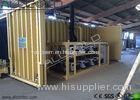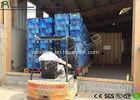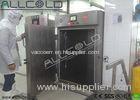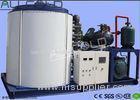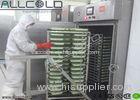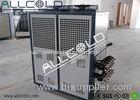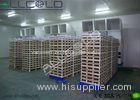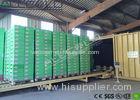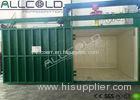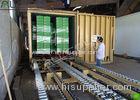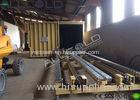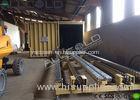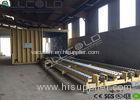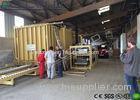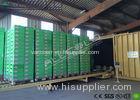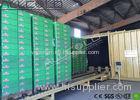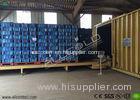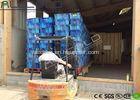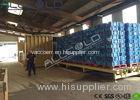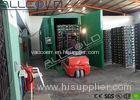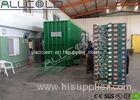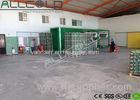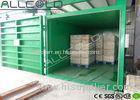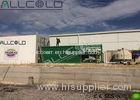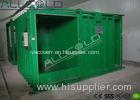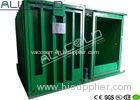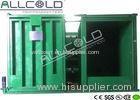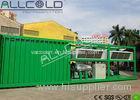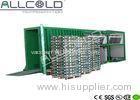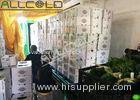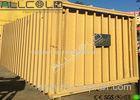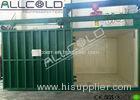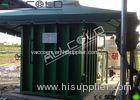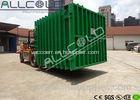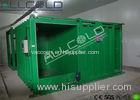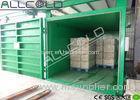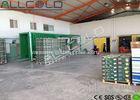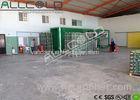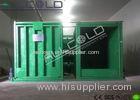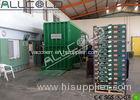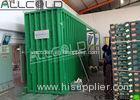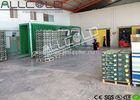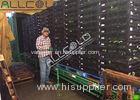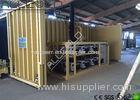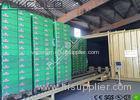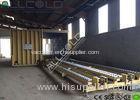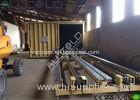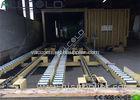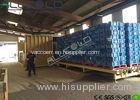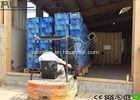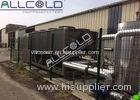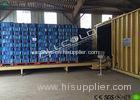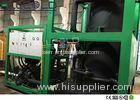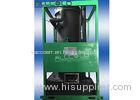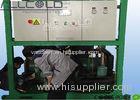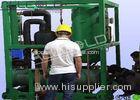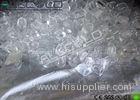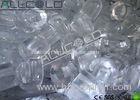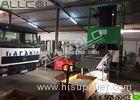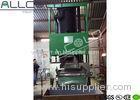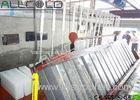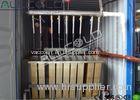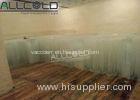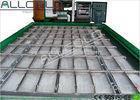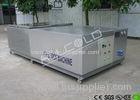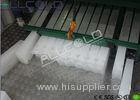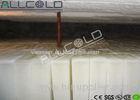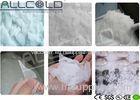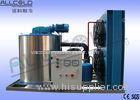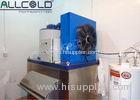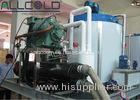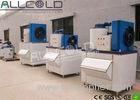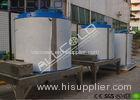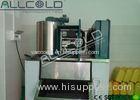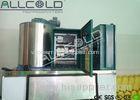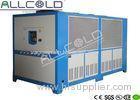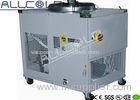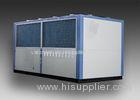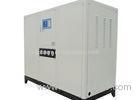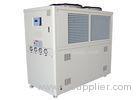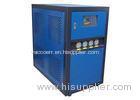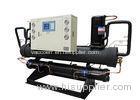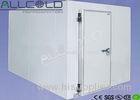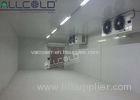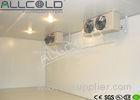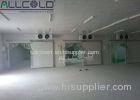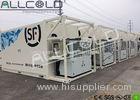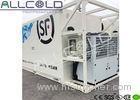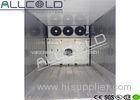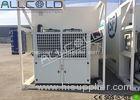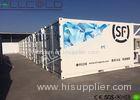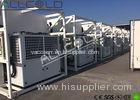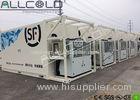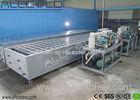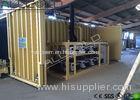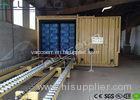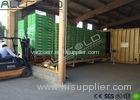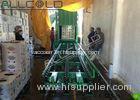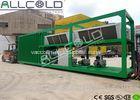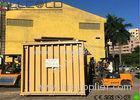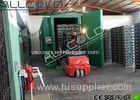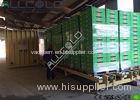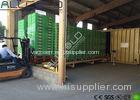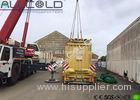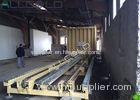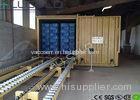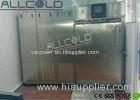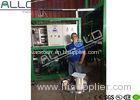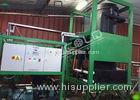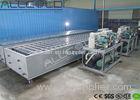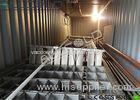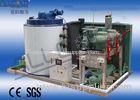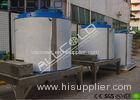Custom Mobile Forced Air Cooling Anti Corrosion PLC Touchscreen Control
| Place of Origin: | Zhejiang, China (Mainland) |
|
|
|
| Add to My Favorites | |
| HiSupplier Escrow |
Product Detail
Custom Mobile Forced Air Cooling Anti Corrosion PLC Touchscreen Control
<span style="font-
Custom Mobile Forced Air Cooling Anti Corrosion PLC Touchscreen Control
Forced - Air Coolers
The energy cost for forced-air cooling can be greater or less than that for simple room cooling, depending on how carefully the system is used. The faster cooling possible with the forced-air method allows for greater use of the cooling facilities, reducing overall operating costs. In addition, since the amount of time required to cool a load of produce is much shorter, less energy is needed to remove heat produced by respiration and to overcome heat gain through the walls, ceiling, and floor of the building.
On the other hand, forced-air cooling is likely to increase the overall energy cost slightly by increasing electrical demand, a measure of the rate at which electricity is consumed. Demand cost contributes significantly to the electrical power bill for most cooling facilities. To reduce demand cost, produce should not be cooled any faster than necessary. Forced-air cooling can also increase cooling cost by increasing the cooling load per unit of time. Quicker cooling requires larger refrigeration units, the cost of which must be amortized over the life of the facility. The benefits of forced-air cooling, however, far outweigh the costs.
Forced-air cooling is a useful tool for preserving the quality of fresh produce. It is most effective when the produce demands quick cooling or when the amount of produce to be cooled per day or week is large enough to justify the increased equipment and electrical demand costs.
Cooling Rate of Forced - Air Cooler System
Forced-air cooling is accomplished by exposing packages of produce in a cooling room to higher air pressure on one side than on the other. This pressure difference forces the cool air through the packages and past the produce, where it picks up heat, greatly increasing the rate of heat transfer. Depending on the temperature, airflow rate, and type of produce being cooled, forced-air cooling can be from 4 to 10 times faster than room cooling.
The graph of time and temperature in Figure 1 illustrates the response of a typical commodity to airflow rates. The beginning temperature of the produce (pulp temperature) is represented by Ta. This temperature varies with ambient conditions and the amount of field heat in the produce; it normally ranges from 15 to 32 celsius.
Application Field
Forced Air Coolers are Suitable for:
Artichokes, Avocados, Green Beans, Brussels Sprouts, Cabbage, Cantaloupes, Cauliflower, Cherries, Cucumbers, Grapes, Honeydews, Kiwi, Nectarines, Okra, Onions (dry), Peaches, Bell Peppers, Plums, Summer Squash, Strawberries, Tomatoes and more.
Benefits of Forced - Air Cooling
To preserve quality, fresh produce should be cooled to its lowest safe (optimum) storage temperature as quickly as is practical and economical. Forced-air cooling is much faster than room cooling and is being used increasingly in North Carolina to cool produce quickly. It offers these advantages:
1. It decreases the time the produce remains at elevated temperatures, thereby reducing deterioration;
2. It results in shorter cooling times and thus more efficient use of the cooling facility;
3. It can cool produce effectively in a variety of unopened containers without wetting it or subjecting it to excessive handling;
4. It is often more energy efficient than room cooling when large volumes of produce must be cooled;
5. An available room-cooling facility with adequate cooling capacity can be converted to forced-air cooling with only a relatively small investment in fans
Features of Forced - Air Cooling
1. High surface area cooling coil
2. High air flow fan capacity
3. Galvanized steel housing for long term protection against corrosion
4. Optimum temperature differential to achieve desired relative humidity
5. Touchscreen controls with PLC
6. Multispeed control for room cooling conditions
7. Ammonia and “Freon” models available
8. Various defrosting options
Real Energy Saving!
The multispeed capability is a real energy saver over other single speed pre-cooling systems and can, in some cases, result in utility company rebates. Advanced temperature controls and PLC's on multiple systems are used to control the unit's functions, which are capable of interfacing with PC based plant management systems.
ALLCOLD precooling systems are complete with packaged refrigeration systems and cooling units, ready for field installation.
Related Search
Find more related products in following catalogs on Hisupplier.com
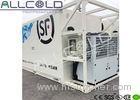
Company Info
SHENZHEN ALLCOLD CO., LTD [China (Mainland)]
Business Type:Manufacturer
City: Shenzhen
Province/State: Guangdong
Country/Region: China (Mainland)



